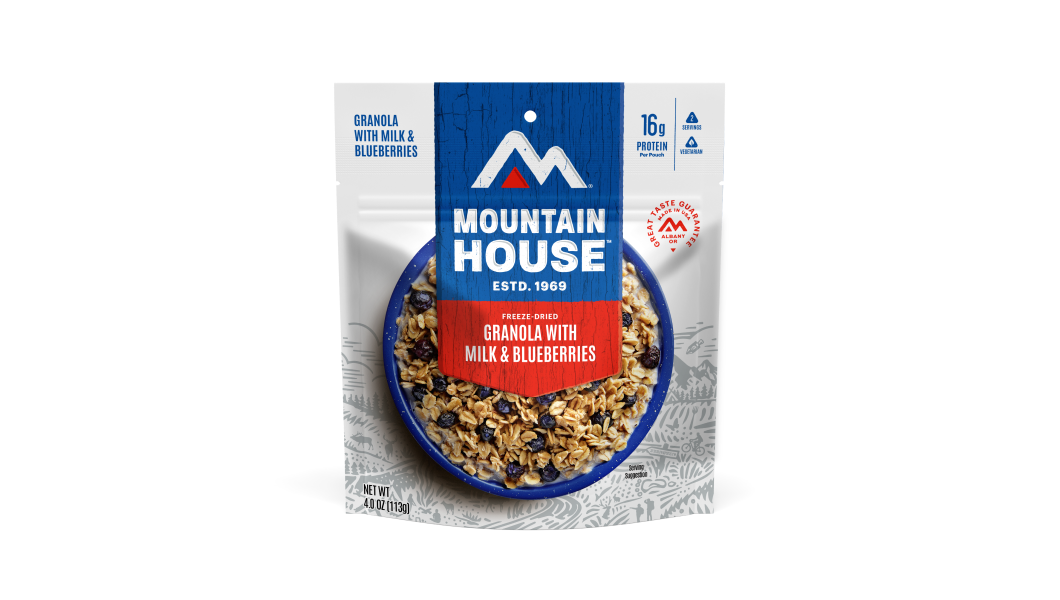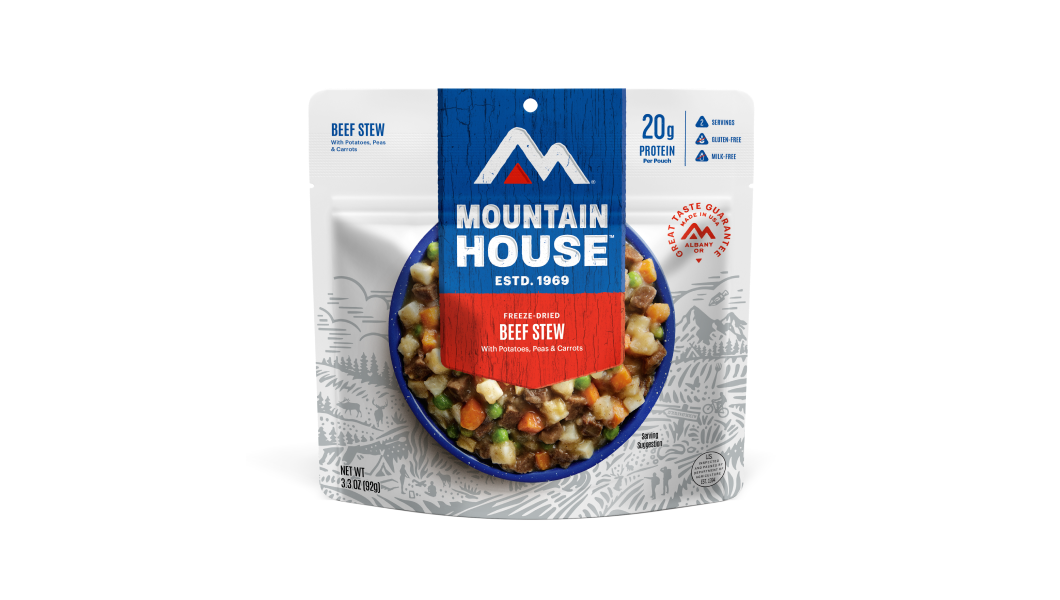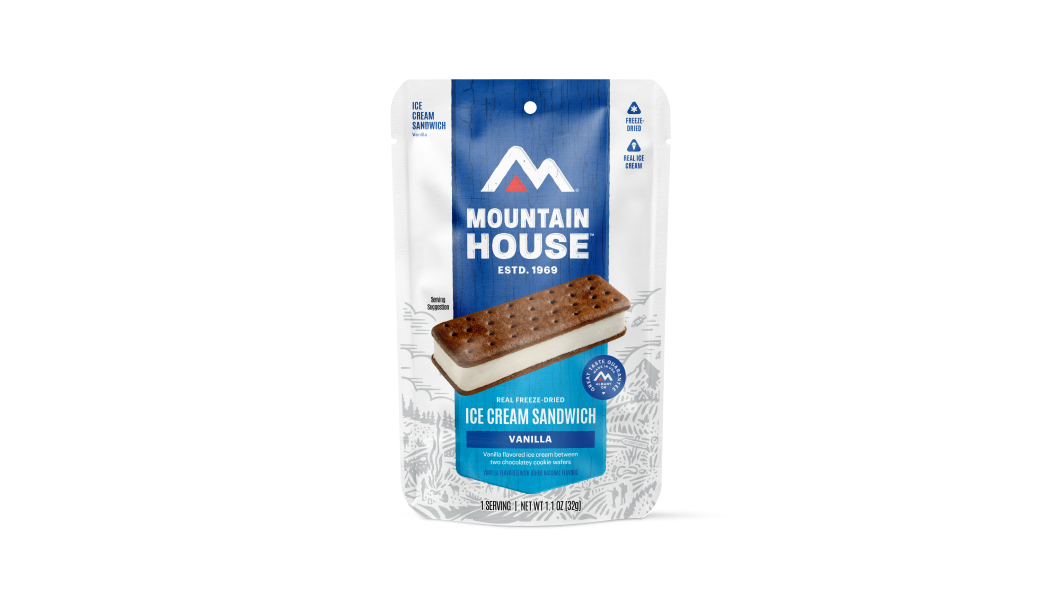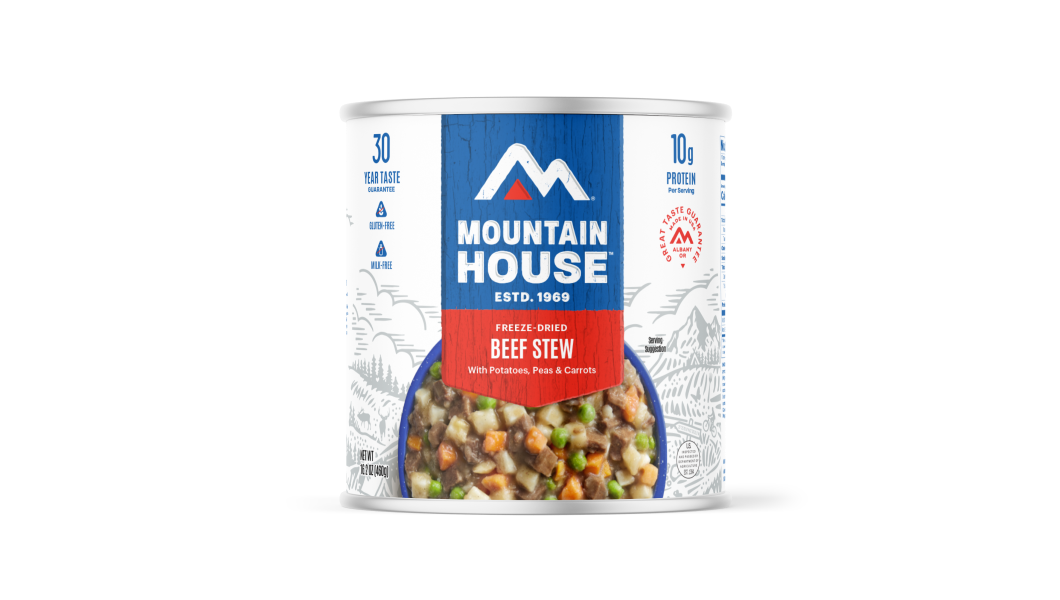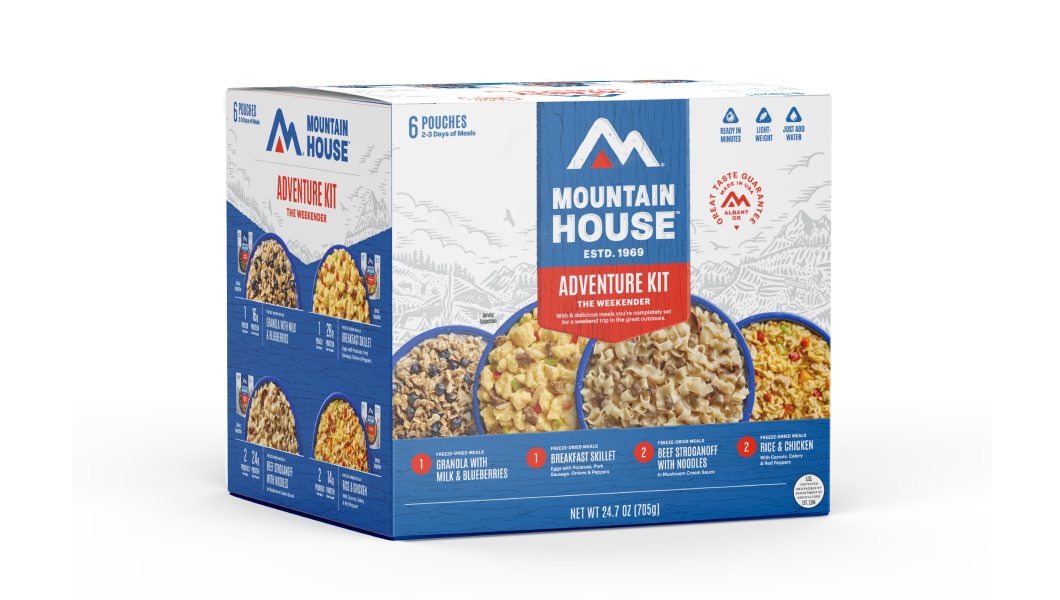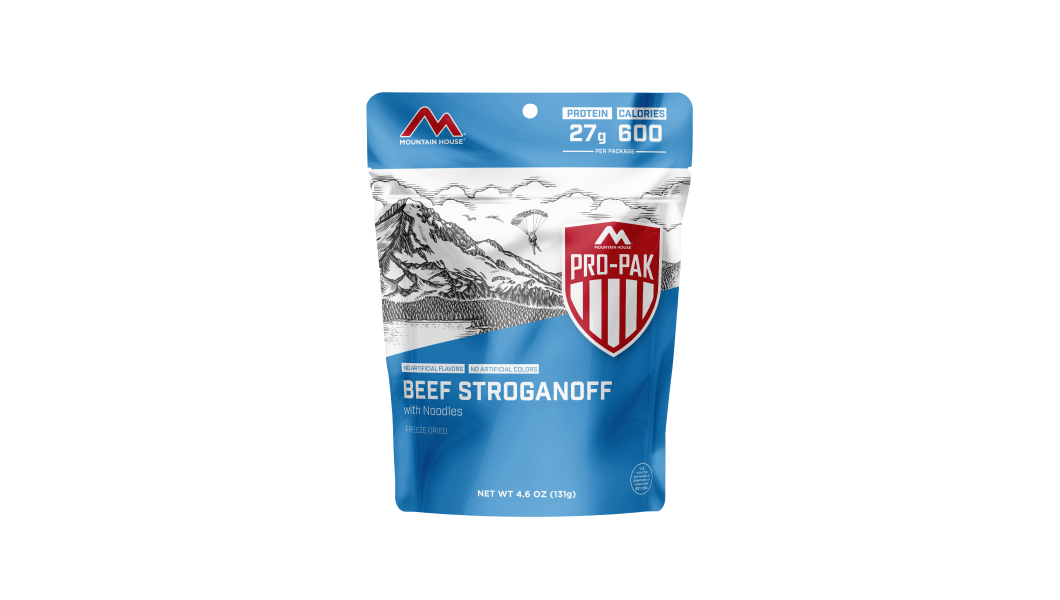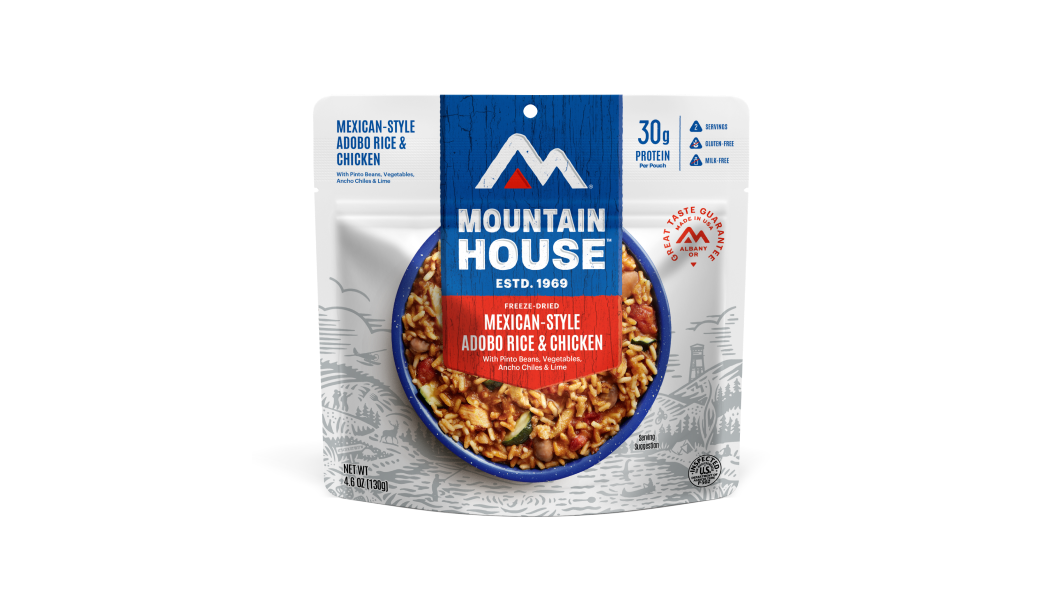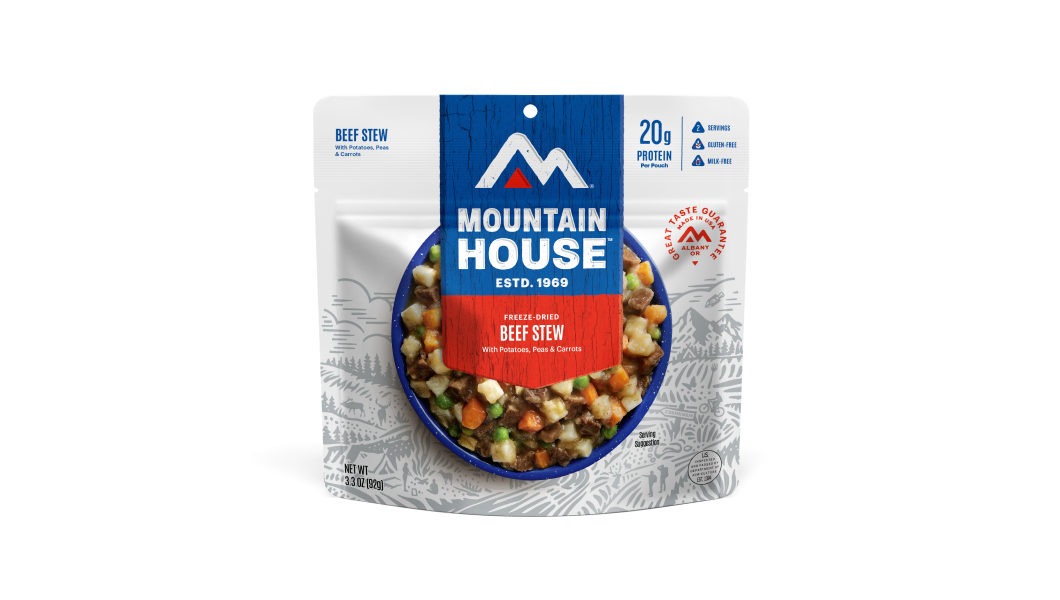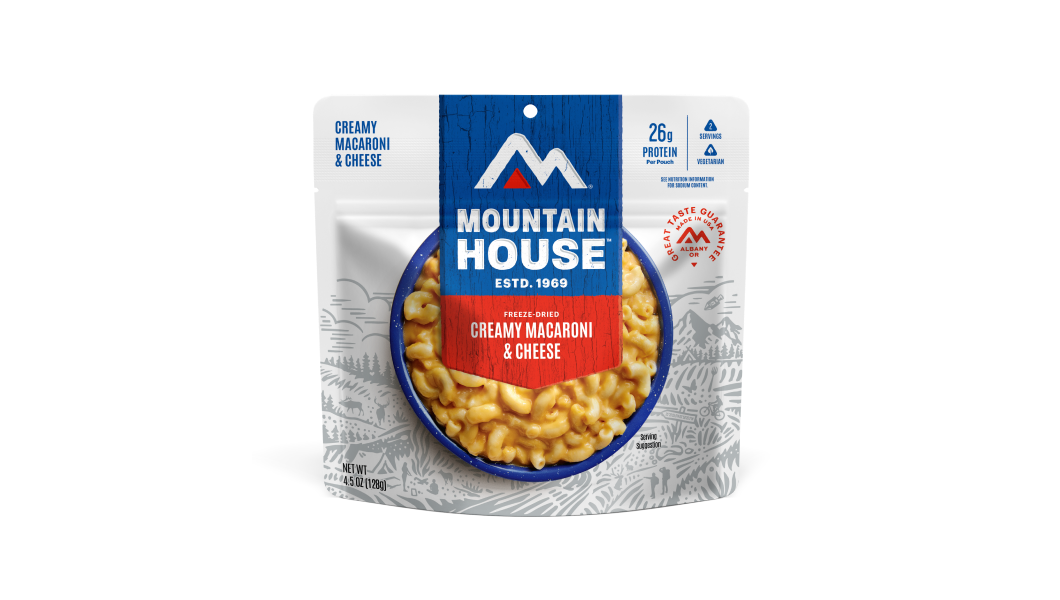Inspired for an Adventure? Check out Beef Stroganoff - Pouch and Beef Stew - Pouch
Free Ground Shipping On All Orders
Over 2,100 Reviews
Add description, images, menus and links to your mega menu
A column with no settings can be used as a spacer
Link to your collections, sales and even external links
Add up to five columns
Add description, images, menus and links to your mega menu
A column with no settings can be used as a spacer
Link to your collections, sales and even external links
Add up to five columns


Two common types of foods used for emergency food storage include freeze-dried food and MRE (Meals Ready to Eat). These two food preservation methods are often confused because they are both designed to give food a long shelf-life, create meals that are portable and lightweight, and are frequently associated with the US Military.
However, the way they are prepared, the nutritional value, and the end taste result all differ greatly. In this article, we will look at the definitions of these emergency food types, the use cases for each, and which is best to use in your own long-term food storage supply.
What Is Freeze-Dried Food?
Freeze-drying, or lyophilization, is a food preservation process that removes 98-99% of all water and moisture from foods while leaving the basic structure (including flavor!) of the food intact.
The basic idea of freeze-drying food is to "lock in" the composition, structure, nutritional value, and flavor of food while removing the liquid components that make food heavier and ultimately shorten the shelf life.
Here at Mountain House, we’ve been in the freeze-drying business for over 50 years. The primary steps in our process include:
- Cooking the food in small batches
- Freezing the food
- Applying vacuum pressure
- Adding heat: The low air pressure and heat cause the ice to turn into water vapor without actually melting (sublimation)
- Capturing the water content to keep it away from the food
Once this process is completed, the freeze-dried food is ready to be packaged. Mountain House’s meals come packaged in pouches that are wide and short to create a bowl-like experience, making it easy to eat straight from the pouch.
The end result is a meal that’s lightweight, shelf-stable, and can easily be rehydrated by adding water. Many freeze-dried meals have a shelf life of 10 years or more, and Mountain House offers an industry-leading 30-year taste guarantee. This same commitment to quality and longevity has been trusted by the U.S. military for decades.
Our work with the military began in 1966 when Oregon Freeze Dry, our parent company, won a military contract to supply Long Range Patrol rations for U.S. troops in the Vietnam War. Since then, Mountain House has proudly worked with the U.S. Military for more than 50 years, providing lightweight and long-lasting meals that have been proven through decades of combat usage in some of the world’s most challenging environments. Early favorites like Beef Stew and Spaghetti with Meat Sauce set the standard for taste and reliability, and today the military still relies on our Pro-Pak line to give the warfighter a familiar taste of home wherever duty calls.
While freeze-dried meals remain a trusted option for both military and civilian use, the U.S. Military also utilizes another type of ration: the MRE.
What Is Freeze-Drying? from Mountain House on YouTube.
What Is an MRE?
MRE stands for Meals, Ready to Eat, and refers to complete, individual military rations designed to feed one service member in the field. MREs have been in use for over 50 years and have undergone extensive combat usage. They were originally created to improve the function and fighting ability of the individual soldier and are still the primary ration today.
The main entrée is packaged in a retort pouch that is fully cooked, heat-sterilized, and sealed, allowing it to be eaten hot or cold without adding water. This wet-packaging method makes the food safe and shelf-stable for about three years at 80°F. However, the retort process can change both the taste and texture compared to freshly prepared foods or freeze-dried foods.
While freeze-dried components (such as granola or certain sides) are sometimes included in an MRE to add variety and reduce weight, the core entrée is a wet-packed retort item, making MREs heavier and shorter in shelf life than fully freeze-dried meals.
What Are the Differences Between MRE and Freeze-Dried Foods?
The main difference between MREs and freeze-dried foods is how they are preserved, which impacts weight, shelf life, taste, and preparation.
Freeze-dried meals have almost all their moisture removed through sublimation, a process that helps preserve the food’s original taste, texture, aroma, and nutritional value. This makes them lightweight, compact, and able to last up to 30+ years when stored properly. They do, however, require water to rehydrate before eating.
MREs use a heat-sterilized retort pouch to package fully cooked, wet-packed entrées. This makes them heavier, shorter in shelf life at about three years when stored at 80°F, and more prone to changes in taste and texture. The advantage is that they are ready to eat without water, making them useful in situations where water is limited.
In short, freeze-dried meals excel in long-term storage and portability, and when rehydrated, they taste like they did when freshly cooked.
Pros and Cons of Both Survival Food Types
Depending on what you plan to use your meals for, it’s good to know which type of food to keep on hand. Here’s what to know about freeze-dried foods:
Pros
- Preserves the nutritional content of the food
- Retains flavor
- Maintains the aroma of the food
- Preserves a high-quality appearance
- Up to 30+ years of shelf life, depending on the brand
- Food does not shrink or toughen when it is freeze-dried
- Freeze-dried meals typically offer the number of calories equivalent to a normal meal
- Can be eaten cold or hot
- Lightweight and easy to carry (making it great not only for emergency food storage but for outdoor adventures like backpacking and camping)
- Variety of meal options from breakfast to dinner, including vegetarian, dairy-free, and gluten-free options
Cons
- Must be reconstituted with water
- Fuel and/or heat are required for boiling water if you want to eat the meal hot (not necessary)
Here are some advantages and disadvantages of MREs:
Pros
- Ready to eat right out of the package
- Does not need to be reconstituted with water
- Can be eaten cold or warm
Cons
- Packaging process alters the flavor of the food, and it may not taste the same as expected (often thought of as bland)
- Packaging process removes some of the health benefits and nutrients in the food
- Does not retain the appearance and aroma of the original food
- Full MRE meals tend to have a higher calorie count
- MREs have a shorter shelf life than their freeze-dried counterparts, with an average shelf life of just 3 years, requiring more frequent rotation and increasing overall costs compared to freeze-dried foods
- Eating it cold may make the taste less appealing
- Wet packaging leaves the food heavier when compared to freeze-dried food

The Best Emergency Food Solution
Freeze-dried foods make an excellent solution for DIY emergency preparedness because of their long shelf-life and the fact that the structure and nutritional value of the food are left intact. You just need to remember to keep plenty of water on hand (at least a gallon of water per person, per day) for rehydrating freeze-dried meals as well as for drinking and sanitation.
Mountain House freeze-dried meals are crafted using high-quality ingredients and delicious recipes, so you can rest easy knowing you have a comforting meal that will be ready when you need it most. We offer many different-sized emergency meal kits, from three days to one year, which can feed anywhere from a single person or a large group of people.
If you are planning for a larger community, most first responders and community planners will also recommend that MREs be available in case of a water shortage.
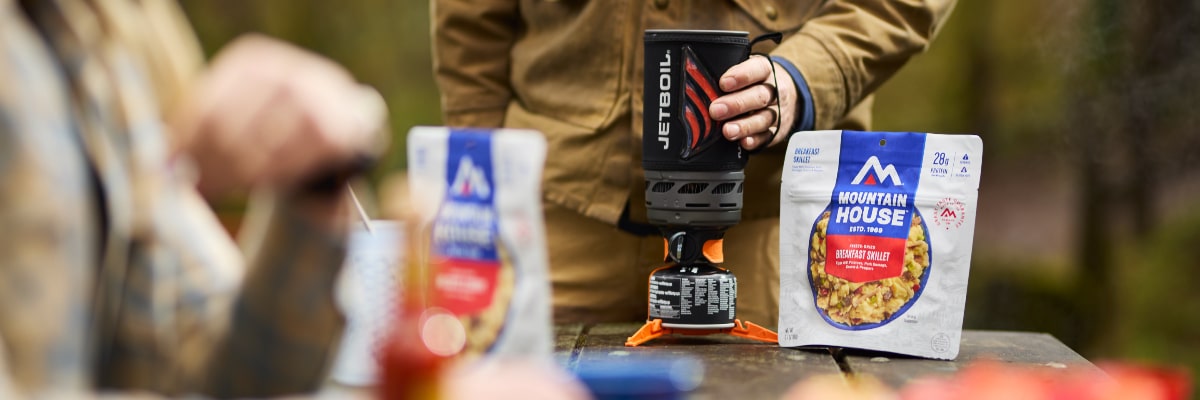
What Ingredients Are in Mountain House Freeze-Dried Meals?

How to Prepare Freeze Dried Food


Stay Hungry for Adventure
Sign Up for Delicious Outdoor Meals & Exclusive Offers!
By clicking ‘Join Now’, I agree to the Terms of Service and Privacy Policy.


Join the adventure
©2025 Mountain House — All Rights Reserved.
Your Cart is Empty
Continue ShoppingYour Cart
Subtotal
$0.00
EXPRESS PAYMENT METHODS AVAILABLE IN CHECKOUT
Taxes and Shipping Calculated at Checkout
Your ExpertVoice deal.
$[Deal Price]
$[Original Price]
Discount applied at checkout.
On sale now — lower than your ExpertVoice discount.
Not eligible for ExpertVoice discount.
